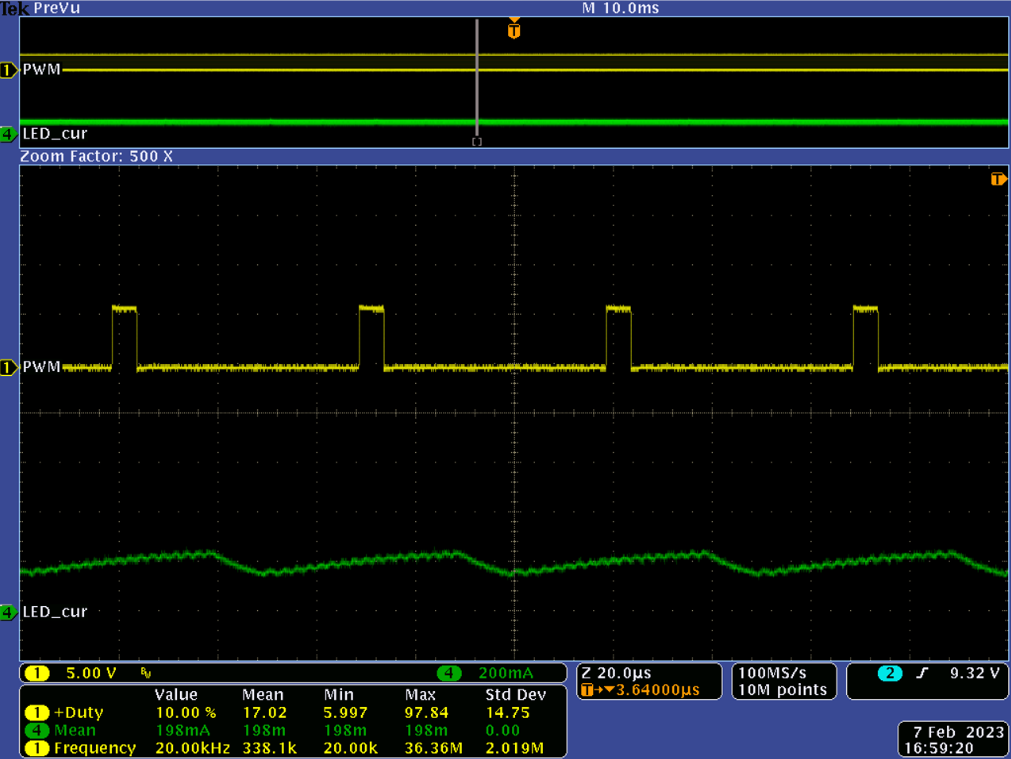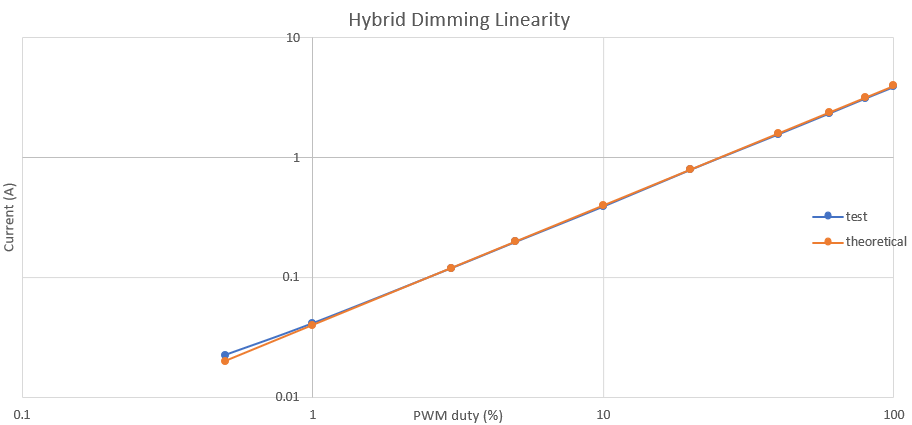SLUUCT0A may 2023 – june 2023 TPS923652 , TPS923653 , TPS923654 , TPS923655
5.6 Hybrid Dimming Performance
Figure 5-14, Figure 5-15 show the hybrid dimming waveforms at 10%, and 20% duty cycles, respectively. Input voltage is 24 V, with 15 white LEDs in series used as load. The full-scale LED current is set at 2 A. The ADIM/HD pin is always low. The frequency of the input PWM signal at the PWM/EN pin is 20 kHz.
 Figure 5-11 Waveforms at 10% Duty Cycle, 20 kHz Hybrid Dimming
Figure 5-11 Waveforms at 10% Duty Cycle, 20 kHz Hybrid Dimming Figure 5-12 Waveforms at 20% Duty Cycle, 20 kHz Hybrid Dimming
Figure 5-12 Waveforms at 20% Duty Cycle, 20 kHz Hybrid DimmingWhen the hybrid dimming is enabled, the LED current is regulated by the analog dimming at high brightness level (12.5% ~ 100%) and by the PWM dimming at low brightness level (0%~12.5%).
Figure 5-13 gives the test result of linearity of hybrid dimming, in comparison with the theoretical value. Input voltage is 24 V, with 15 white LEDs in series used as load. The full-scale LED current is set at 2 A. The frequency of the input PWM signal at the PWM/EN pin is 20 kHz.
 Figure 5-13 Hybrid Dimming Linearity
Figure 5-13 Hybrid Dimming Linearity